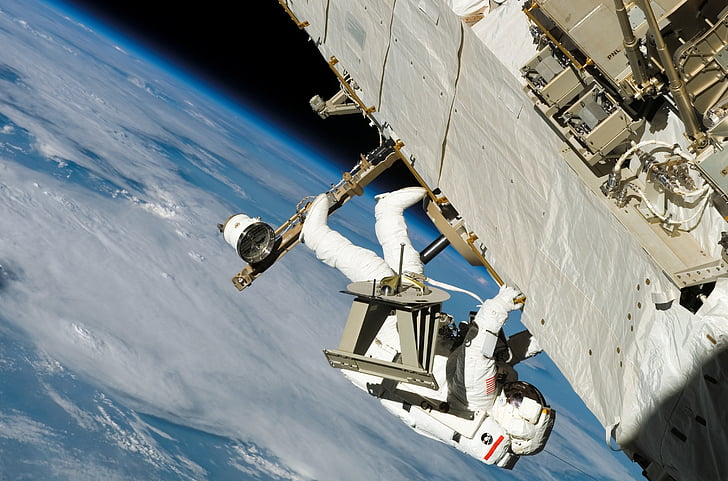

By Reeturaj - Oct 30, 2024
Three Chinese astronauts launch to the Tiangong space station for a six-month stay, marking China's presence in space and its growing capabilities as an emerging space power. The launch of Shenzhou-17 is declared a success as part of China's record year of space exploration, aiming to surpass the US in space achievements. The crew, led by pilot Cai Xuzhe and including China's first female space engineer Wang Haoze, embodies national pride and youthfulness. China's space ambitions include building a lunar research station and collaborating with international partners as it expands its footprint in space exploration.

Astronaut via Pickpik
LATEST
On Thursday, three Chinese astronauts lifted off on the Shenzhou-17 spacecraft from the Jiuquan Satellite Launch Center deep in the Gobi Desert, heading for the Tiangong space station for a six-month stay. When China’s first astronaut Yang Liwei blasted off into space in 2003, a history-making moment declared his country’s arrival as an emerging space power. Two decades later, China has become a major presence in space – a status that mirrors its growing economic, political, and military ascendency on Earth. It now has its permanent outpost in orbit – a fully operational space station – and routinely rotates crews to live and work there.
Beijing declared the launch of Shenzhou 19 a "complete success" - it is one of 100 launches China has planned in a record year of space exploration as it tries to outdo its rival, the United States. Flames shot out of the rocket launcher as it took to the skies, lighting up the Gobi Desert with a deafening roar. Hundreds of people lined the streets, waving and cheering the names of the taikonauts, China’s word for astronauts, as they were sent off.
The pilot of this mission, Cai Xuzhe, is a veteran but he’s travelling with a new generation of Chinese-trained taikonauts born in 1990 – including China’s first female space engineer, Wang Haoze. “Their youthful energy has made me feel younger and even more confident,” he told the gathered media ahead of take-off. He recalls watching one of China’s first space station missions as a 13-year-old with “excitement and awe”. He chose to become a pilot hoping that this is how he could serve his country. All three convey their deep sense of national pride, and state media has emphasized that this will be its “youngest crew” to date.
Tiangong has become a symbol of China’s ambition and capabilities in space after Chinese astronauts were shut out of the ISS, a US-led collaboration with Russia, Europe, Japan, and Canada, for more than two decades. Since 2011, NASA has been effectively banned from cooperating with China, after Congress passed the Wolf Amendment due to espionage-related concerns. That exclusion has at least in part spurred Beijing to build its space station. China has sought to open up its station to collaboration with international partners, including by hosting experiments from other countries. And that offer will be all the more appealing after the ISS retires, which is scheduled around 2030.
In 2019, China became the first country to land on the far side of the moon. A year later, it successfully put into orbit its final Beidou satellite, setting the stage to challenge the US Global Positioning System (GPS). And in 2021, it became the only country after the US to put a functioning rover on Mars. China’s ambitions do not end there.
Next year, it plans to bring back the first samples ever collected from the moon’s far side. By the end of this decade, it wants to send astronauts to the moon and build an international lunar research station. Several countries have reportedly joined its planned lunar station, including Russia, Venezuela, and South Africa. China’s successful launch of its youngest astronauts is a testament to its growing capabilities in space exploration and a beacon of inspiration for aspiring scientists worldwide. As these young pioneers embark on their journey, they carry with them the hopes and dreams of a new generation eager to explore the final frontier.